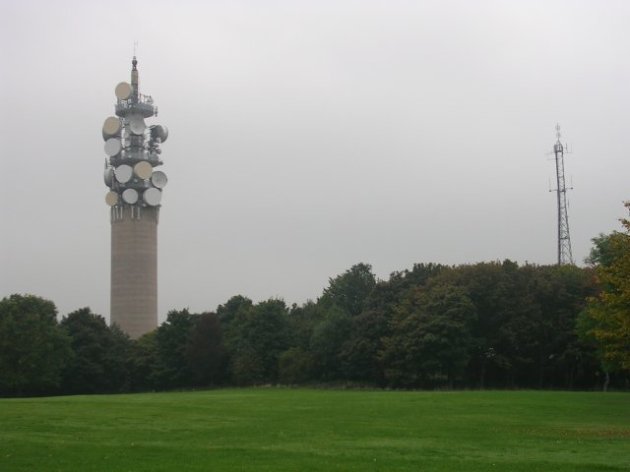CFP for Brook & Dodge’s proposed July 2015 conference session on Cold War Urbanism (plus my submitted abstract)
September 1, 2014 Leave a comment
Richard Brook and Martin Dodge presented their work on the Guardian Exchange complex at the Cold War Bunkers RGS session last week, and I’m delighted to circulate their call for papers for their proposed Cold War Urbanism session at the International Conference of Historical Geographers 2015, London, 5-10 July 2015. NB: the deadline for submissions (to them, not me) is soon: 12 September 2014.
CfP: Cold war urbanism: Histories of strategic plans, secure structures and technocratic politics in post-war Britain and beyond
Convenors: Richard Brook (Manchester School of Architecture) and Martin Dodge (University of Manchester)
In this session we wish to explore how the threat of nuclear war in the 1950s and ‘60s affected planning at a range of geographic scales. National and international telecommunications networks were built during this time as a direct response to global political conditions. The rise of atomic power and computational technologies required new facilities that were often dispersed and situated variously for secrecy and locally available expertise/experience. The zoning of land and organisation of facilities and the planning of towns is not conventionally viewed as informed by processes of the ‘warfare state’ (Edgerton, 2005), but we want to ask; What were the patterns of the built environment, economic structures and aesthetics / cultures of Cold War urbanism in Britain? As Boyd and Linehan (2013) state in the introduction to their recent book Ordnance: War + Architecture & Space, we need to be alert to ‘escalation in the intersections between the fabric of the landscape and the technologies of war and the extrusion and mutation of war from the battlefield into everyday life’. We seek papers drawing on a range of different evidential bases, archival research, personal histories and lived experiences and theoretical ideas to understand the spatiality of technological development, primarily focused upon city scales and architectural resultants.
The following is non-exhaustive list of possible themes:
+ spaces of production, testing, storage of novel military†weapons systems associated with cold war including aircraft and bombers, missiles and submarines, radar system and satellites
+ sites associated with atomic weapons and the distinct design challenges of keeping these safe and secure
+ civil nuclear power research and networks of production, with their links to militarism
+ research and manufacturing facilities for advanced digital computing technologies, programming, and data centres
+ academic research facilities associated with military funding and cold war doctrines
+ civic spaces in cities with shelters and spaces of civilian refuge
+ developments of national telecommunications and need for hardened facilities, underground bunkers and remote radio networks
+ bunkers for the strategic communications, military C&C and continuation of government in the event of war
+ architectural design, materials science and electronics deployed to counter atomic age threats
+ aesthetics of cold war urbanism, forms of visual representation of atomic power and nuclear weapons, the cultural meanings attached to new militarised landscapes and computerisation of society
+ development of transportation infrastructure, logistics and routing to take account of cold war
+ overall shaping of cities, housing renewal and suburbanisation to try to achieve population decentralisation that would reduce the risk of annihilation of citizenry in a single blast
__________________________________________________________________________
Please send a title and brief abstract (of no more than 200 words) to either of the convenors by 12 September 2014. Also, please detail if you have any special audio-visual requirements or mobility requirements.
# Richard Brook,†R.Brook@mmu.ac.uk, Manchester School of Architecture
# Martin Dodge,†M.Dodge@manchester.ac.uk, Department of Geography, University of Manchester
__________________________________________________________________________
Further details on the ICHG Conference, including registration fees, are available at:
———————————————————————————————————————————————————-
And here’s the abstract I’ve submitted:
Forming an everyday Cold War network – the constitutive role of law, surveying and asset management in the birth, life and death of ROC Posts
Luke Bennett & Sarah Cardwell, Department of the Natural & Built Environment, Sheffield Hallam University, UK
Born in the wartime exigencies of countering Zeppelin and Gotha Bomber raids towards the end of the First World War, the Royal Observer Corps and its distributed network of observation posts grew to become an iconic part of 1939-45 homeland security across the UK. Then, during the Cold War, the ROC’s network of people and land-sites was re-purposed for the observation of atomic bomb blasts and radioactive fallout clouds. This paper will examine the constitutive role of (mundane, vanilla flavour) property law in the creation and management of the ROC’s national network of 1,500 Cold War monitoring posts. For the Cold War, this network of small underground posts, spread across fields and hilltops, was mostly held in existence via leases, and the simple surrender of these leases in 1991 (transferring these posts back to ambivalent rural landowners following the fall of the Berlin Wall and the consequent disbanding of the ROC) ‘privatised’, multiplied and diversified the actors engaged in the abandonment, decommissioning and or alternative use-making for these now de-networked structures.
Photo credit (photo added by Luke):

